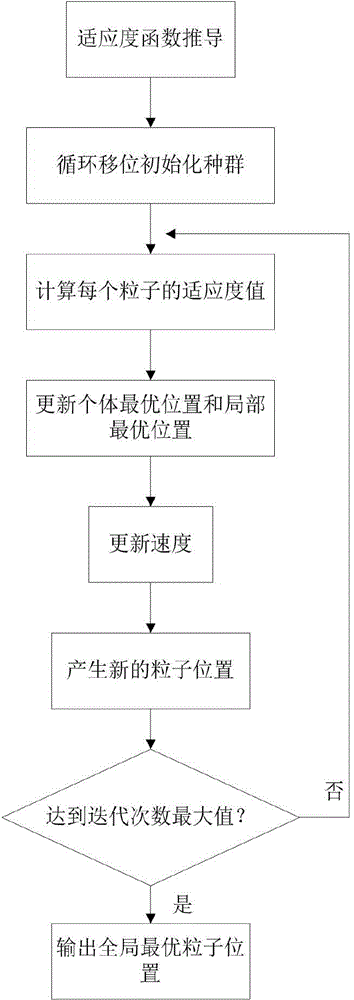Fast antenna selection method for united receiving and transmitting end of MIMO system
An antenna selection, transceiver technology, applied in diversity/multi-antenna systems, space transmit diversity and other directions, can solve the problem of mismatching antenna number and requirements, and high computational complexity.
- Summary
- Abstract
- Description
- Claims
- Application Information
AI Technical Summary
Problems solved by technology
Method used
Image
Examples
Embodiment Construction
[0052] The present invention will be further described below in conjunction with the accompanying drawings and examples.
[0053] This embodiment is a fast method for joint antenna selection in a MIMO system, which is applied to such as figure 1 The MIMO communication system shown, in this embodiment N T Take 8, N t Take 3, N R Take 16, Nr takes 4; MIMO system uses 8 transmit antennas to take 3, 16 receive antennas to take 4, by figure 1 The number of radio frequency links is less than the number of antennas, and it is necessary to select antennas that can provide large channel capacity to connect with radio frequency links. The receiving end calculates different channel capacities corresponding to different antenna selection schemes through the channel state information, and adopts the scheme with the largest channel capacity. After the receiving end selection module makes the antenna selection result, it sends the control instruction to the radio frequency link control p...
PUM
 Login to View More
Login to View More Abstract
Description
Claims
Application Information
 Login to View More
Login to View More - R&D
- Intellectual Property
- Life Sciences
- Materials
- Tech Scout
- Unparalleled Data Quality
- Higher Quality Content
- 60% Fewer Hallucinations
Browse by: Latest US Patents, China's latest patents, Technical Efficacy Thesaurus, Application Domain, Technology Topic, Popular Technical Reports.
© 2025 PatSnap. All rights reserved.Legal|Privacy policy|Modern Slavery Act Transparency Statement|Sitemap|About US| Contact US: help@patsnap.com



